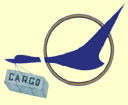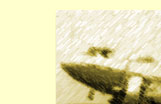 |
 |
 |
 |
|
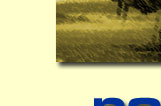 |
 |
 |
 |
|
 |
 |
 |
 |
Flying the Freighters
By Richard A. Brown
Retired NCA Captain
After doing some research, by way of the collection of North Central annual reports and my own personal flight logs, I have come up with the following, which I feel is pretty close to what actually took place back in the mid to late1960s.
The time frame would be 1965 to 1968. First some background concerning what was going on at NCA during this era from an aircraft fleet stand point. North Central was beginning a period of astounding growth at this time. Ten Douglas DC-9-30 aircraft were on order with delivery set for the late summer of 1967. Additionally, the company had contracted with Pacific Airmotive (PacAero) at Burbank, California to modify our fleet of thirty-one Convair 440s with the Allison 501 turbo-prop conversion that would change the aircraft type from a piston powered CV-440 to the prop-jet powered CV-580.
How and why did the freighter program begin? In the mid 1960s, the company was incurring numerous delays out on the line that were caused by a large increase in the air cargo part of our operation. The solution to this was for NCA to acquire several C-47 cargo aircraft. My records indicate that we had two, all-cargo type aircraft in service while other records indicate that there were three. These freighters were based at ORD (Chicago-O’Hare) during the relatively short life span of the freighter operation that ran from April 1965 through about 1969. There were a few operational problems at the beginning of the program, but after a few months, things settled down to a routine operation. I do not have the FAA registration numbers of the aircraft that became freighters. My log book shows only the company ship numbers as A/C numbers 48 and 49. I also seem to remember that the traditional company logo on the tail of these two aircraft was modified to show the blue duck with a large cargo box suspended from its bill with a rope, thus indicating that this was a freighter airplane. It is sad that very few pictures from that era seem to exist.
I do not recall if we actually published our freighter schedules in the public passenger time table or not. I would guess that we must have, otherwise folks would not have known about the service. Here is a rough layout of the freighter schedule as taken from my flight log. There were four basic round trips from ORD. Two to MSP (Minneapolis/St Paul) one to FNT (Flint) via DTW (Detroit-Metro) and a non-stop round trip to GRB (Green Bay). These flights operated week days only, to coincide with the business world.
The following is a twenty-four hour schedule beginning at 2400 or midnight and using a 24 hour clock.
FLT. 91 Dept. ORD 0100 via GRR, DTW - Term. at FNT at 0500.
FLT. 92 Dept. FNT 0615 via DTW, GRR - Term. at ORD at 1200
FLT. 95 Dept. ORD 0440 - Term. GRB at 0640
FLT. 96 Dept. GRB 0715 - Term. ORD at 0830
FLT. 97 Dept. ORD 1045 via JVL, MSN, LSE, ONA - Term. MSP at 1515
FLT 94 Dept. MSP 1720 via EAU, AUW, GRB, MTW - Term ORD at 2230
FLT 93 Dept. ORD 1350 via MTW, GRB, AUW, EAU - Term. MSP at 1730
FLT 98 Dept. MSP 1845 via ONA, LSE, MSN, JVL - Term. ORD at 2345
GRR – Grand Rapids, Michigan
JVL - Beloit / Janesville, Wisconsin
MSN - Madison, Wisconsin
LSE - LaCrosse, Wisconsin
ONA – Winona, Minnesota
EAU - Eau Claire, Wisconsin
AUW - Wausau / Marshfield, Wisconsin
MTW - Manitowoc / Sheboygan, Wisconsin
My first flight as a captain was on June 1, 1967 flying flight 97 to MSP with Gary West as F/O. We returned to ORD on flight 94 and used aircraft # 49 for both flights. The stops that were made on Flights 97, 94, 93 and 98 were arrived at by looking at the total flight time for those flights. The flights going through GRB were generally about an hour greater in total flight time than for the route that came down the Mississippi River and over through MSN to ORD. Beginning on June 3, 1967, I flew flights 91 and 92 as a pretty steady diet for about three or four months. I really did not mind the “back side of the clock” flying as my body easily adjusted to that sort of flying. I also had excellent co-operation from my family in allowing me to sleep and eat on that schedule for three or four nights a week. And I usually had a long weekend break between fight sequences. For a very, very junior reserve captain, that was not all that bad. I might add that I also flew many all night charters on the CV-580 and in 1979, when Republic got into the “red eye” DC-9 flying between the Midwest and Florida, flew many months on those flights. Consider this about flying an “all night” operation. The air is usually much smoother. ATC is pretty quiet and you can usually get almost any routing or altitude that you wanted and besides, those “all night” country western AM radio stations from Dallas and New Orleans provided great background listening for someone who was out there plying the airways in the middle of the night on a four or five hour leg.
You can also see how the scheduling of these flights was handled from a customer stand point. Example: Flt. 98 from JVL would make up Flt. 91 to FNT (Flint). General Motors manufactured transmissions at JVL and shipped them to FNT for installation at their assembly plant. The Flt. 98 – Flt 91 routing was made to order for that situation and we routinely carried crated transmissions stacked like cord wood in the freighter cabin.
Here are some interesting things that took place in the freighter operation. We were east bound on flight 91 one night when the first officer mentioned that he was surprised that I turned the main cabin lights off as we departed ORD. I inquired as to why he was surprised. His reply went something like this: “Well, we have about six bodies (as in cadavers) stacked in the rear of the cabin”. I asked why that should make any difference and he mentioned that there was one captain who never turned the cabin lights off when they had cadavers on board. That was an interesting point of view to say the least. I got quite a chuckle out of it.
Then there was the night of October 20, 1967 when the phone rang long after I had gone to bed. It was a little past midnight. The call was from flight control and I was number one to go if they needed a captain that night. Seems that one of our brand new DC-9s was stuck at STE (Stevens Point) unable to start engines because their APU (auxiliary power unit) had failed. And before you ask…..DC-9s at STE? Absolutely yes. In those early months of the DC-9 operation we did operate the DC-9s over CV-440 routes across Wisconsin. This particular flight was operating about two hours behind schedule. What they wanted me to do was crew a freighter, in this case aircraft #48 from ORD to STE with a portable APU strapped down in the rear. The plan was to figure out a way to get the air from the portable APU on the freighter over to the rear of the DC-9. When I arrived at our ORD hangar, the portable APU was already loaded and tied down. They gave me all the hoses that they had and at 0225, Ferry Flight 381 departed ORD (So ship 48 had an FAA registration ending in 381). Gary Baglien was the F/O that night as we accepted a direct radar vector from Chicago ATC to STE. My log book says that the flight time was 1:44. On arrival, we had three station agents, our freighter crew and the DC-9 crew to figure a way to get the job done. First consideration was that we could never unload the portable unit with what we had to work with. I repositioned the freighter as close to the DC-9 as I could, tail to tail. Then all of us, the three station agents, and the four crew members pushed the freighter as close to the DC-9 as we could. Then we swung the double cargo doors full open. The portable APU unit would remain in the rear of the freighter and the next consideration was how to start the portable unit, with its top mounted exhaust stack pointing straight up, without damaging the freighter interior. We managed to move the power unit over so the exhaust stack was pointed skyward through the open cargo doors and well clear of the freighter fuselage. Our luck was still holding as the hose that we brought with us just reached the area of the DC-9 where it was to be hooked up for the air start. The DC-9 crew started one engine and we disconnected the hose and I moved the freighter well out of the way so the DC-9 crew could finish their start procedure and get on their way. Then the station crew helped us reposition the power unit and tie it down. My log book states that that whole process, on the ground at STE, took only 1:10 and at 0651, Gary and I arrived back at ORD in plenty of time for the mechanics to make the freighter ready for Flt. 97 to MSP.
I note in my log book that we flew several extra sections to GRB and IMT (Iron Mountain) during mid December, 1967. There was a very large regional postal service office in IMT and with all the Christmas mail, we must have had some good loads to ORD. By mid 1968, I note that my log book shows no further freighter operation, at least that I flew. I show my last freighter flight took place in May 1968. I believe that this service was very short term and that after the DC-9s came along, with their increased cargo capacity, that the freighter service was no longer needed. I really enjoyed my short term experience with the freighter operation. It was a period of rapid change for North Central Airlines as we transitioned from piston to jet power.
 |
 |
 |
||
 |
 |
 |
||
 |
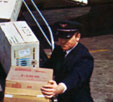 |
 |
||
 |
 |
|||
 |
 |
|
 |
 |
|
 |
||
North Central launched all-cargo operations in April of 1965 using Douglas DC-3 aircraft for a period of about three years. Photos of the initial operation show N86553 (ship #47 / C/N 4715) used for a brief time (sold late 1965 or 1966) followed by two other Douglas freighters. North Central flew ship #48 (N28381 C/N 4089) and ship #49 (N33632 C/N 4138) for cargo operations to destinations where normal scheduled passenger aircraft could not meet the requirements for freight demand. N28381 and N33632 were used as passenger aircraft as ship # 21 and # 25 respectively - sold - and repurchased again for all-cargo use.
 |
 |
 |
 |
|
 |
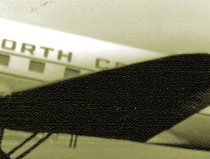 |
 |
 |
|
 |
 |
 |
 |
|
 |
||||
 |
 |
|
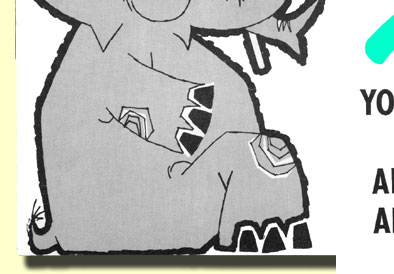 |
 |
|
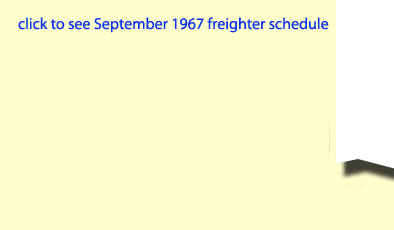 |
 |
